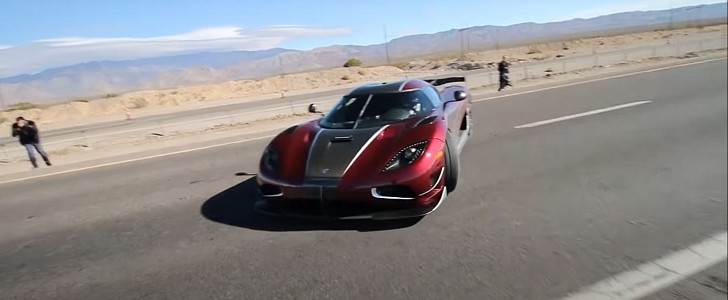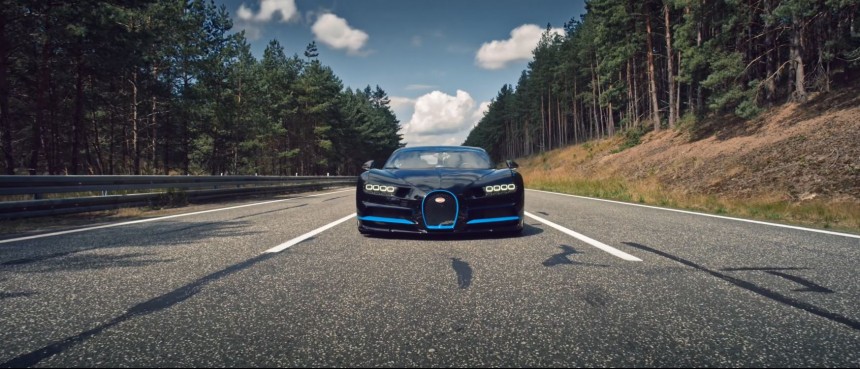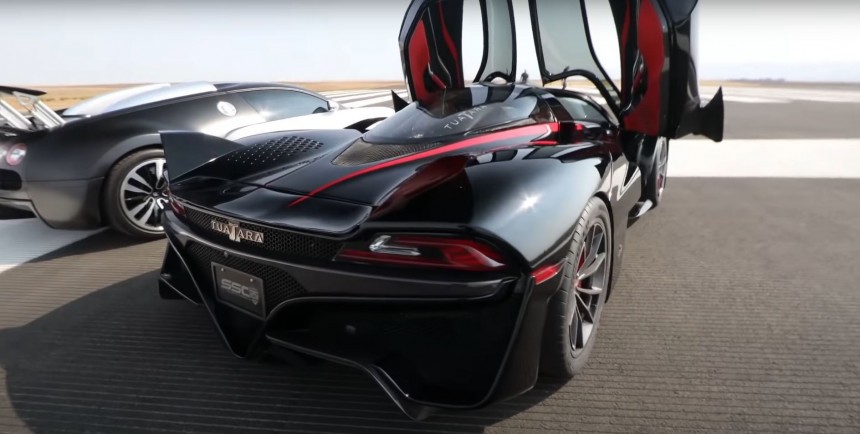Christian Von Koenigsegg is confident that his company still has the production car speed record that was obtained back in 2017 with the Agera RS. Here’s why he dismisses Bugatti’s own record. We’ll also try to settle this debate with nothing but facts.
Koenigsegg’s CEO was asked in a recent podcast with Jason Stein if he’s planning on retaking the production car speed record from Bugatti. The man chuckles and points out that Koenigsegg never lost it to Bugatti in the first place. “In our mind, they didn’t really take it from us,” said the executive. He argues that the French carmaker’s run was made with a prototype, and the speed was registered in only one direction.
Moreover, he claims the Koenigsegg Jesko Absolut is - “as far as” the company “can judge” - even faster than the Bugatti in question. The Swede also underlines that it will be “very exciting to showcase the car’s ultimate capability in the near future.” So, for now, this is just another statement that’s not backed by verified and certified proof.
But von Koenigsegg has a point.
Remember the Toyota Supra memes where the Japanese car had a camera attached to it and was supposedly filming the Chiron while staying in front of it during the whole run? They didn’t appear out of nowhere and without reason.
Not only was the Bugatti a pre-production unit of the enhanced Chiron Super Sport 300+, but the run was also done by disregarding the rules that say how a production car speed record can be achieved: you must drive the car both ways on the same road so things like wind and inclination can be taken out of the final result. The maximum speeds of the runs are then added, divided by two, and the number you get after this simple math operation is your official result.
Bugatti later added that the production version of the 300-mph Chiron will only be “technically and visually inspired by the record-breaking vehicle,” which broke the speed barrier as a prototype, not as a series car. That’s how the 30 units of the Super Sport 300+ appeared. In the end, it was a marketing stunt, albeit an impressive one.
So, is von Koenigsegg right? Let’s see.
On the other hand, the Agera RS did two runs in 2017 on the same road (a closed section of U.S. Highway 160), one after the other, without any changes done to the car, and managed to achieve an average speed of 277.8 mph (447.9 kph). The data was recorded by Racelogic, but the video doesn’t show the dashboard. Moreover, it was done with a customer car, and nobody else certified it! However, it was generally approved as being real because Koenigsegg carries a lot of trust from fans, the press, and customers. The helicopters, drones, and influencers present at the scene also helped.
If we go back further in time, then we’ll find Bugatti again. The Veyron 16.4 Super Sport broke the world production car speed record in 2010 by achieving 267.8 mph (431.0 kph). But this was also controversial. Initially, it was certified by Guinness World Records, then the title was retracted because the car’s speed limiter was deactivated, and after just a week, it was awarded back to Bugatti.
In the end, we’re left with nothing but confusion: you can either believe Koenigsegg’s 2017 attempt with a customer car that was measured by Racelogic, or you can trust Guinness World Records that confirmed Bugatti’s Veyron Super Sport 2010 success, or you can even choose SSC’s second attempt for a true record – but with just one car.
At this point, there’s nothing that’s completely and undoubtedly certain when it comes to production car speed records.
Maybe everyone’s a winner.
Moreover, he claims the Koenigsegg Jesko Absolut is - “as far as” the company “can judge” - even faster than the Bugatti in question. The Swede also underlines that it will be “very exciting to showcase the car’s ultimate capability in the near future.” So, for now, this is just another statement that’s not backed by verified and certified proof.
But von Koenigsegg has a point.
What happened, and who’s the king
Bugatti managed the performance of breaking the 300 mph (483 kph) barrier with the Chiron in 2019. At that time, and as you can see in this video, Board Member Stefan Ellrott said the automaker was heading for the 300-mph mark “for our series hypersports car.” And they did just that. The run proved the Chiron was able to travel at over 300 mph, and it kept pushing until it reached 304.7 mph (490.4 kph) on the straight path of the Ehra-Lessien track. But things quickly took another turn after the world was notified of this feat.Remember the Toyota Supra memes where the Japanese car had a camera attached to it and was supposedly filming the Chiron while staying in front of it during the whole run? They didn’t appear out of nowhere and without reason.
Not only was the Bugatti a pre-production unit of the enhanced Chiron Super Sport 300+, but the run was also done by disregarding the rules that say how a production car speed record can be achieved: you must drive the car both ways on the same road so things like wind and inclination can be taken out of the final result. The maximum speeds of the runs are then added, divided by two, and the number you get after this simple math operation is your official result.
So, is von Koenigsegg right? Let’s see.
On the other hand, the Agera RS did two runs in 2017 on the same road (a closed section of U.S. Highway 160), one after the other, without any changes done to the car, and managed to achieve an average speed of 277.8 mph (447.9 kph). The data was recorded by Racelogic, but the video doesn’t show the dashboard. Moreover, it was done with a customer car, and nobody else certified it! However, it was generally approved as being real because Koenigsegg carries a lot of trust from fans, the press, and customers. The helicopters, drones, and influencers present at the scene also helped.
Who to trust?
But wait, there’s more! The SSC Tuatara tried it too! But the American carmaker lied about the speed - twice. Once with a video on YouTube, then with a press statement. It was caught red-handed by YouTubers that were maligned by established media because they asked the right questions about the event. The company apologized and said it would be done again. The next run showed an average speed of 282.9 mph (455.2 kph) and was confirmed by a VBox Racelogic system and Garmin’s GPS. But they wanted to achieve the original speed of 331 mph (533 kph) and tried again. Unfortunately, the car was damaged in a crash. Notice “the car” phrasing, which means a single unit was available. And that, again, raises some eyebrows. How can it be a production car speed record if there aren’t any other vehicles to be used?In the end, we’re left with nothing but confusion: you can either believe Koenigsegg’s 2017 attempt with a customer car that was measured by Racelogic, or you can trust Guinness World Records that confirmed Bugatti’s Veyron Super Sport 2010 success, or you can even choose SSC’s second attempt for a true record – but with just one car.
At this point, there’s nothing that’s completely and undoubtedly certain when it comes to production car speed records.
Maybe everyone’s a winner.













